At her death, the Witch of Wall Street was worth more than J. P. Morgan, and nearly all of it was in cash. Yet Hetty Green had worn the same dress for thirty years and lived in squalor. The Witch’s son Ned was another matter, a six-foot, four-inch, 300-pound eccentric who tossed away $3 million a year on cars, coins, stamps, female “wards,” pornography, yachts, and Texas politics.
Henrietta Howland Robinson was born in New Bedford, Massachusetts on November 21, 1835. She inherited about $1 million outright from her father in 1865 and a life interest in $5 million. She was tall, full-figured, and handsome, with “a bosom full and high,” large, bright blue, intelligent eyes, regular features, and a fine, delicate, peach-blossom complexion that she retained into old age. Edward H. Green, a wealthy Vermonter, fell in love with her as she walked into the dining room in Boston’s Parker House.
With a pre-nuptial agreement under which each remained independent of the other in financial matters, they married in 1867. After eight years in London, the couple returned to America to live in Bellows Falls, Vermont. Here Hetty began to show an obsessive parsimony, spending half the night looking for a two-cent stamp she had mislaid, wearing wildly outdated clothes that were never mended or replaced, and not washing to save money on soap. (In later years, Mrs. Green’s economy led guests in hotel dining-rooms to ask for Hetty to be seated as far away from them as possible.) She became notorious and a favorite target for reporters with a satirical eye.
Mr. Green found Mrs. Green embarrassing. Relocating the family to New York, he took a bachelor apartment in an expensive men’s residential hotel, while Hetty, though wealthier than ever, lived with her children in cheap flats in Brooklyn and Hoboken, frequently moving to evade state taxes. They rarely paid more than twenty-two dollars a month for rent or five dollars a week for food.
In 1886, her son Ned was knocked down and dragged by a cart at Ninth Avenue and 23rd Street, severely injuring his right leg. She refused to pay doctors’ fees, instead making the rounds of free medical clinics in Manhattan and Brooklyn. She was recognized and turned away because she refused to pay although she could afford to. Eventually she had to take Ned to a doctor who, by then, could do nothing but advise amputation. It was that or death by gangrene, but Hetty would not—perhaps could not—pay for a doctor. Finally, her husband paid for the procedure, and the youth’s leg was cut off about seven inches above the knee.
Yet the boy remained loyal to his mother, who had begun to recognize his flair for business. Within months, Ned had become Hetty’s agent, first in Chicago and then Texas. During his stay in the Windy City, his lodge brothers, realizing the lad was an innocent at twenty-two, arranged an appointment for him at a house of mirth, ensuring first that the madam understood the guest of honor was a shy one-legged virgin.
The voluptuous redhead who entertained him, Mabel Harlow, was a thorough professional, skillful, tolerant, and kindly, who had learned her trade in Dallas and Houston before hitting the big time. Ned fell immediately in love but Mabel, uninterested in commitment, left town on the next train.
One of Hetty’s lesser enterprises, the Texas Midland Railroad, was fifty-one miles of unprofitable rusty rail connecting no place with nowhere. She sent Ned to make it viable. He stumped into the American National Bank of Terrell, Texas, bearing a cashier’s check for $500,000. This was then twice the bank’s capital. The bankers wired Hetty for confirmation. She replied that Ned had a mole on his forehead and a cork leg. He showed both to the bankers. They took the check. Then they made him a vice president.
Of those days, he later said, “I felt wonderful. I was fancy free.” Looking down at his cork leg, he added, “You might also say I was footloose.” Shortly after Ned’s arrival in Texas, the Governor made him an honorary colonel. Ned ordered gold-braided uniforms from Brooks Brothers for the next inaugural ball and used the title for the rest of his life.
He also became interested in Republican politics, befriending an unlikely but powerful state boss, William Madison “Gooseneck Bill” McDonald, a gangly black man with a bobbing Adam’s apple.
After working his way through Roger Williams College, Gooseneck Bill had returned to the Lone Star State as a teacher. This was no way to get rich, so he also sold insurance for fraternal orders and went into politics. Texas Democrats then banned blacks from membership. So McDonald joined the Republicans. While the GOP was then an electoral dead-end in a former Confederate state, the Texas Republicans sent delegates to their party’s national convention, where Presidential candidates wanted their votes.
McDonald was soon able to buy and sell jobs, do deals, get contracts, and begin making money. But no Negro could become State Republican chairman. He needed a white man to front for him, like the large, affable railroad president from Terrell. McDonald planted the seed of ambition: State Chairman, Governor, maybe…. In September, 1896, following McDonald’s advice (“Never bribe a man with a check. Always use cash.”), Ned overwhelmed the State convention in a tidal wave of babes, booze, and gold, winning the first of four terms as State party chairman.
In his private life, Colonel Green behaved as if he had just invented sex and couldn’t wait to spread the idea around. When the Texas Midland bought an opera house as its office building, Edward used its top floor as his apartment, where he received an ever-changing array of women, including occasional professional talent from Dallas. He and his friends enjoyed snapping photographs of each other flagrante delicto, perhaps foreshadowing his robust taste for pornography.
One day Ned and Mabel met by accident in the lobby of the town’s hotel. (She was in Terrell on business.) She said, “Hiya, Eddie,” and they fell into each other’s arms. This time, Mabel stuck around to become the Colonel’s “housekeeper.” As she was easily bored and her only friends were whores, Mabel occasionally bolted town after a few drinks to return to her trade. Gooseneck Bill repeatedly tracked her down, had her arrested, and ensured her return to Terrell on the next train.
In the meantime, Hetty, who referred to Miss Harlow as Miss Harlot, had been busy on the stock market. As Lucius Beebe observed in The Big Spenders, “The New York Stock Exchange had hitherto been a closely guarded present of purely masculine rapacity, but Hetty, in the guise of a sort of reverse Florence Nightingale, was soon stacking the maimed and dying like cordwood as a result of her ruthless operations, and bears and bulls alike were licking financial wounds that were pitiful to behold.”
But indulging the odd occasional bout of securities manipulation was merely a pastime. She made her real money as a loan shark, lending money to bankers and brokers at the highest possible rate of interest from her rent-free desk at the Seaboard National Bank’s Wall Street office, where she always had $40 to $50 million on deposit.
During the Panic of 1907, perhaps her finest hour, the Knickerbocker Trust Company failed for $52 million. There was no Federal Deposit Insurance Corporation then: the depositors lost their savings. Hetty was not among them. Several weeks before the crash, she had told a friend to get her money out of the Knickerbocker. Hetty had already done so. “The men in that bank are too good-looking,” she explained. “You mark my words.”
Meanwhile, she continued to live in obscure and shabby boarding houses, sometimes in unfurnished rooms where she did her own cooking on a single gas plate. In April, 1916, while staying with a friend, the old lady suffered a stroke after arguing with the housekeeper over extravagance. The cook, Hetty claimed, was bankrupting her employer by using whole milk where skimmed would do. She died two months later: the Colonel had paid for round-the-clock care, the nurses dressing as maids lest Hetty have another stroke at the thought of the expense. She left $100 million to her two children.
At the time of his mother’s death, Colonel Green usually wore rimless spectacles, wing collars and, except on the very saddest occasions, a bemused smile. Thereafter, some say, his way of life became a protest against the penury that had cost him a leg. He collected stamps, coins, and pornography without restraint.
Hetty had been dead for less than a month when Ned married Mabel. To celebrate his nuptials, the Colonel wanted the world’s largest private yacht. With World War I raging, the Colonel was unable to order a vessel to his design. He inquired whether J. P. Morgan’s Corsair or Vincent Astor’s Nourmahal were available. They were not. Instead, he purchased a Great Lakes excursion steamer, the S.S. United States. It was only 195 feet long, shorter than Corsair. Green solved the problem by having the United States lengthened by sixty-one feet. When finished, the main cabin was 28 by 32 feet, with an open fieldstone fireplace. Here, the Colonel’s imagination failed him and the boat’s interior was furnished by John Wanamaker’s department store
When the United States arrived at Round Hill, the Colonel’s residence in Buzzards Bay, he encountered an insurmountable obstacle. The steamer burned nearly two tons of coal a day just keeping up enough steam pressure to activate the showers and fire lines. In wartime, nothing like this was available for a single civilian’s use. Then, on August 21, 1919, the United States sank at its mooring in sixteen feet of water. Colonel Green’s pride took ten hours to go down in broad daylight. There were no casualties; the furnishings were recovered; and the boat was scrapped.
In any case, he was finding that the money now piled up without his help. Eventually, the only words he was uttering at directors’ meetings were the motion to adjourn. Respectable neighbors on the Cape only noticed him when the Goodyear blimp he loved to moor to a tree on his front lawn got loose and was pursued by its custodians over their immaculately groomed estates. But he was wildly popular as a prize spendthrift of the Miami winter season. He signaled his arrival by presenting a $20 gold piece to each traffic policeman and would repeat the gesture when he went back North.
Colonel Green usually carried sufficient pocket money for emergencies. Once, he was breakfasting at the Adolphus Hotel in Dallas with Edward Harper, president of the Security National Bank. Just as the sausages were coming to the table, a shaken emissary rushed in to tell the banker of a run on his bank. Unwilling to see his guest inconvenienced, Green pulled out his wallet and counted out twenty $10,000 banknotes. As this might have been insufficient, Green sent a bellboy to his suite, instructing him to fetch a battered Gladstone lying on the bed. It proved to be almost entirely filled with $10,000 bills, from which the Colonel counted out another thirty and handed them to Harper, no receipt necessary. Half a million dollars proved sufficient to save the bank, and Green had the valise returned to his rooms instructing the bellboy to stow it safely in the closet.
Still, now and then his mother’s thrifty ways would surface in the Colonel too. When his estate foreman told him that fifty gallons of flat paint were needed for the outbuildings, the Colonel bought a carload, paying $1.00 a can instead of the retail price of twice that amount. Reportedly, the foreman never figured out what to do with the extra 3,000 gallons.
Ned’s right leg had been buried in the Green family plot of Immanuel Church, in Bellows Falls, Vermont. In 1936, the rest of him joined it. His last joke came during probate. Among the objets d’art that made up the appurtenances of the estate was one that resembled a crown: large, bejeweled, gilt and enamel. One lawyer finally picked it up and to inspect it. He suddenly wrinkled his nose. “Gentlemen,” he said, “it’s a chamber pot. And it’s been used.”
New York Press, April 28, 1999
 In a land of illiterates, a little education and a gift for mob oratory go a long way. Riel’s rise in late 1869 was meteoric. In October he became secretary of the Metis National Committee and by November had become such an irritant that Sir John A. Macdonald, Canada’s prime minister, discussed the possibility of bribing him into silence. By December Riel was president of Manitoba’s provisional government. He seized Fort Garry (now Winnipeg), where he established his capital. His troops closed the border. Riel then negotiated Manitoba’s admission to the Confederation as a self-governing province rather than a mere territory.
In a land of illiterates, a little education and a gift for mob oratory go a long way. Riel’s rise in late 1869 was meteoric. In October he became secretary of the Metis National Committee and by November had become such an irritant that Sir John A. Macdonald, Canada’s prime minister, discussed the possibility of bribing him into silence. By December Riel was president of Manitoba’s provisional government. He seized Fort Garry (now Winnipeg), where he established his capital. His troops closed the border. Riel then negotiated Manitoba’s admission to the Confederation as a self-governing province rather than a mere territory.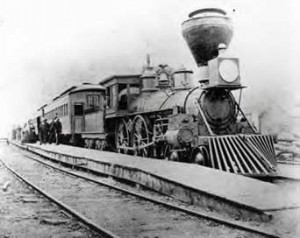 Then, after fourteen years’ exile, Riel returned. He had been teaching at a mission school in Montana when a Metis delegation arrived. The provincial government had not kept Manitoba intact for the Metis, now outnumbered by white immigrants. The government’s procrastination over granting land to the Metis and its refusal to recognize them as a distinct people had revived discontent. Worse, Eastern speculators had been granted Metis-held lands and authorized to evict them.
Then, after fourteen years’ exile, Riel returned. He had been teaching at a mission school in Montana when a Metis delegation arrived. The provincial government had not kept Manitoba intact for the Metis, now outnumbered by white immigrants. The government’s procrastination over granting land to the Metis and its refusal to recognize them as a distinct people had revived discontent. Worse, Eastern speculators had been granted Metis-held lands and authorized to evict them.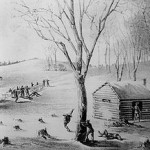
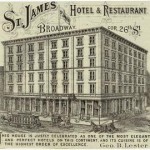 Four years later, he began working for the New York Central Railroad. He studied bookkeeping and penmanship (he wrote a magnificently ornate hand and usually signed his name in full, deeming James Buchanan Brady a name worthy of a few flourishes).
Four years later, he began working for the New York Central Railroad. He studied bookkeeping and penmanship (he wrote a magnificently ornate hand and usually signed his name in full, deeming James Buchanan Brady a name worthy of a few flourishes).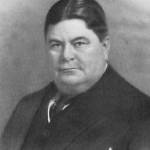
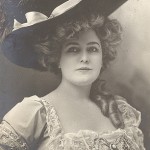 Yet Brady’s relationship with the most lusted-after woman in the United States—the blonde, blue-eyed, spectacularly voluptuous Lillian Russell—was entirely Platonic. America’s sex symbol during the 1880s and ’90s, Russell had made her mark as an actress and singer, but she was also a skillful card player and and an unerringly accurate tobacco spitter. Her extraordinarily warm, intimate friendship with Brady lasted for over thirty years. He was her frequent escort; they traveled and vacationed together; they confided in one another. She came to love him dearly. Sex, however, never entered into it.
Yet Brady’s relationship with the most lusted-after woman in the United States—the blonde, blue-eyed, spectacularly voluptuous Lillian Russell—was entirely Platonic. America’s sex symbol during the 1880s and ’90s, Russell had made her mark as an actress and singer, but she was also a skillful card player and and an unerringly accurate tobacco spitter. Her extraordinarily warm, intimate friendship with Brady lasted for over thirty years. He was her frequent escort; they traveled and vacationed together; they confided in one another. She came to love him dearly. Sex, however, never entered into it.